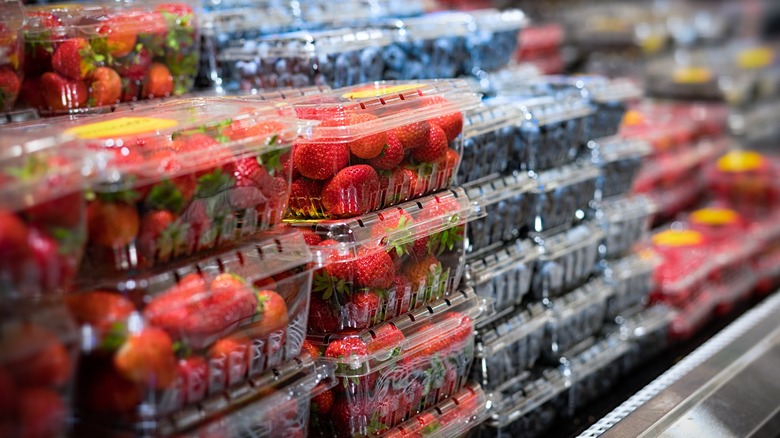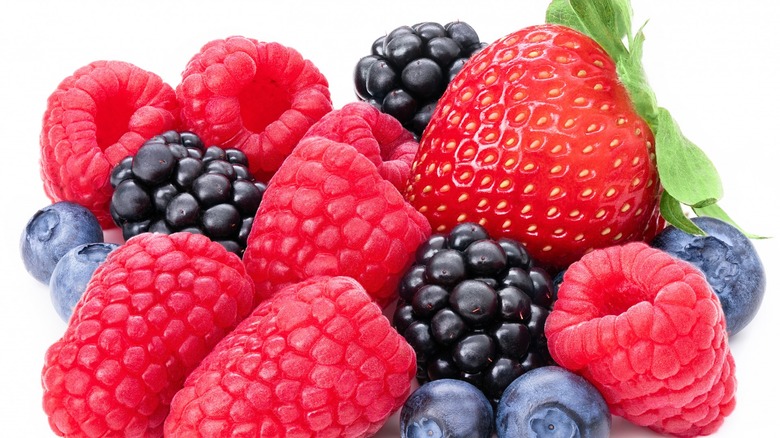Pay Special Attention To Color When Buying Berries At The Store
In the bountiful produce section of your local grocery store or the various stalls at the farmers' market, you'll find a myriad of fruits beckoning with their vibrant hues and promises of sweet, juicy goodness. Among them, berries, with their diverse palette and succulent flavors, are especially tempting. However, before you reach out for that punnet of fruit, take a moment to consider the profound importance of color as a determinant of freshness, taste, and nutrition.
Berries are considered one of the healthiest foods worldwide due to their high antioxidant content, vitamins, and other disease-fighting nutrients, per Healthline. It's therefore crucial to identify the freshest, ripest ones to reap their maximum benefits. And with these soft fruits, if unripe when harvested, most of them don't continue to ripen afterward. So when you're in the berry aisle, don't just reach for the largest fruits, because size is not always an indicator of how ripe and sweet the berries are. On the other hand, the deeper and more vibrant the color, the closer you are to experiencing perfection.
For the sweetest berries, know your colors
Starting with strawberries, which are arguably the most popular among the berry family, look for a deep, rich red color. A pale or whitish hue around the stem or on the body of the strawberry often implies that it was harvested prematurely. Such versions might not deliver the burst of sweetness one anticipates and can be somewhat tart.
Blueberries, on the other hand, should ideally be deep blue to almost purplish-black. A silvery, powdery look on the surface, often referred to as the "bloom" is a natural protective coating and is a sign of freshness. However, steer clear of berries that have a reddish undertone. These are underripe and can be sour, lacking the full-bodied sweetness that characterizes a mature blueberry.
Blackberries and raspberries are also popular choices among customers. Blackberries should have a deep black hue, which means if they are reddish or purplish you shouldn't buy them. Meanwhile, raspberries should be consistent in color — a deep, vibrant red suggests optimal ripeness and flavor. Ultimately, both of these berries shouldn't be overly soft or mushy, which can indicate over-ripeness or the onset of decay.
With these tips in mind, you'll be sure to pick the best varieties the next time you're at the market.

